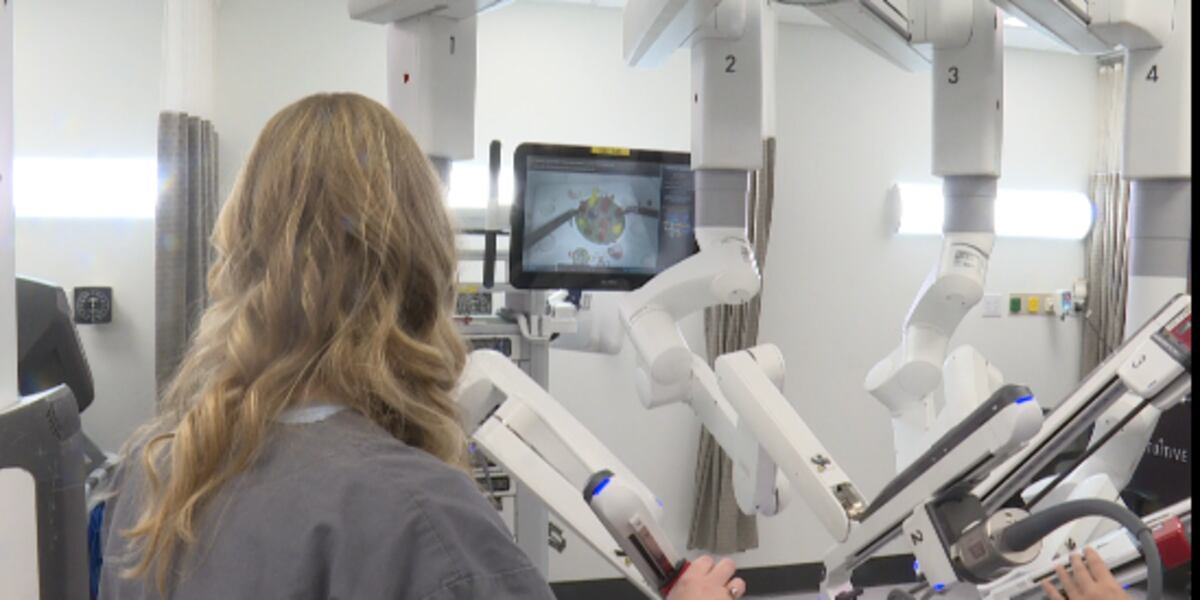
SPRINGFIELD, Mo. (KY3) – When you think of operating rooms, you probably think about the presence of doctors and nurses.
But there are other important members of the team, including surgical techs, who not only help prepare the operating room but also assist the doctors and nurses during the procedure.
The role of the surgical technologist is important because they ensure a sterile and organized environment. They pass the sterile instruments and supplies to surgeons and their assistants during an operation. They also may hold retractors or internal organs in place during the procedure.
But more and more these days, their jobs involve helping to prepare robotic equipment for use during surgery. In Springfield, both CoxHealth and Mercy have multiple robotic surgery set-ups, and the National Institute of Medicine reported that between 2012-2018 robotic surgery increased from 1.8 percent to more than 15 percent.
Now, surgical tech students at Ozarks Technical Community College are getting the opportunity to get trained on a state-of-the-art $2 million da Vinci Robot that’s been loaned to the school.
“Before this, we just looked at a picture (of the robots) in a textbook and talked about it,” said Angie Enlow, OTC’s Surgical Technology Program Director. “We’re the first surgical tech program to actually have this kind of hands-on training as part of the education.”
“Looking at it in a textbook just does not do it justice at all,” said Leann Gregory, a surgical tech student from Morrisville. “A lot of the veteran staffers that work in hospitals struggle with learning this technology, so we are very fortunate to have it right out of the gate.”
“Reading about it puts it in my head,” added Nixa surgical tech student Abby Baldwin. “But actually putting my hands on it is how I comprehend it better.”
A console in one corner of the room looks quite a bit like a machine used to take the eye test at the DMV. In the real world, it is there that the surgeon actually performs the operation using the console’s hand-and-feet controls to manipulate the robot arms that are several feet away. There, the surgery techs have prepared and placed the instruments inside the robot arms that are then inserted into portals (holes) in a circular metal object that represents the patient.
“Instead of us having the ring on the instruments (they use in passing out the hand instruments), we have these gearboxes that we attach to the robot,” Gregory explained. “Then the robot is able to move the gears around. We put the type of instrument the surgeon wants (such as a camera) down through the shaft, and there are all the pulleys and levers that help manipulate the graspers (the tong-like pinchers at the end that are used like fingers).”
“It’s becoming more mainstream,” Enlow said of robotic surgery. “Especially with abdominal cases, they’re becoming very common, and there are some doctors who do most of their surgeries robotically now.”
Robotic surgery is similar but different from laparoscopic surgery in that they both use small incisions and a camera, but instead of the surgeon holding and manually moving the surgical instruments during laparoscopic surgery, the doctor sits at the computer console and uses controls to manipulate the robot.
Enlow pointed out that robotic surgery provides the surgeon with a greater range of motion and precision, which can limit patients’ pain and recovery time.
“When a surgeon is using the instrument by hand, if there’s any tremor (unsteady hand movement), the part of it that’s inside the patient is going to have a lot of tremors,” she said. “But because the robotic arm is being used remotely from the surgeon’s console, it takes away all the tremor. Plus, unlike laparoscopy, the end of the robotic instrument can be manipulated just like a wrist in all directions. The biggest difference, though, is that a surgeon is working in 3D versus 2D. Laparoscopy is 2D, so you don’t have depth perception like you do with robotics. Those are all huge benefits for the patient. They can end up going home the same day as opposed to staying in the hospital 3-5 days.”
And just like the rest of the healthcare industry, the 14 surgical tech students at OTC will have no problems finding employment when they graduate.
“There is a huge surgical technologist shortage,” Enlow said. “I could double the size of this program, and every one of them could get a job.”
The only problem is that all the surgical tech students also got to simulate being an actual doctor performing surgery when they operated the computer console during training.
“Yeah, some of the people who did really well on the surgical station are now like, ‘Maybe I should be a doctor instead,’” Baldwin laughed.
“It is tempting,” added Gregory. “It’s not as easy as it looks, but it is intriguing. And now they’re working on being able to use the robotics to be able to feel and have the sensation of what you’re touching inside the body. So that does raise your curiosity into thinking about becoming a doctor.”
To report a correction or typo, please email [email protected]
Copyright 2023 KY3. All rights reserved.
